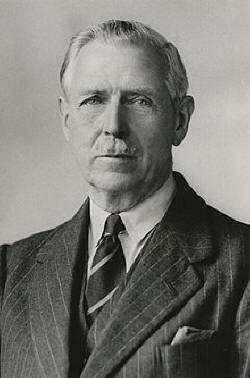

Wife Dorothy Wellesley, Duchess of Wellington
Queer Places:
Stratfield Saye House, Reading RG7 2BT, Regno Unito
Eton College, Windsor SL4 6DW, Regno Unito
Apsley House, 149 Piccadilly, London W1J 7NT, Regno Unito
 Gerald
Wellesley, 7th Duke of Wellington,
KG, DL, FRIBA (21
August 1885 – 4 January 1972), styled Lord Gerald Wellesley between 1900 and
1943, was an Anglo-Irish diplomat, soldier, and architect.
Gerald
Wellesley, 7th Duke of Wellington,
KG, DL, FRIBA (21
August 1885 – 4 January 1972), styled Lord Gerald Wellesley between 1900 and
1943, was an Anglo-Irish diplomat, soldier, and architect.
Wellesley was the third son of Lord Arthur Wellesley (later 4th Duke of Wellington) and Lady Arthur Wellesley (later Duchess of Wellington, née Kathleen Bulkeley Williams). He was baptised at St Jude's Church of Ireland parish church, Kilmainham, Dublin, on 27 September 1885.[1] He was educated at Eton.
Wellesley served as a diplomat in the Diplomatic Corps in 1908. He held the office of Third Secretary of the Diplomatic Service between 1910–17, and the office of Second Secretary of the Diplomatic Service between 1917-19. He was invested as a Fellow of the Royal Institute of British Architects in 1921, and as a Fellow of the Royal Society of Arts in 1935, and was Surveyor of the King's Works of Art, 1936–43. He gained the rank of Lieutenant-Colonel in 1939 in the service of the Grenadier Guards. He fought in the Second World War between 1939-45. As a somewhat elderly officer with a spinsterish manner, he earned the nickname'The Iron Duchess',[2] but his diplomatic skills proved invaluable in dealing with the allies.[3]
In 1943, he succeeded his nephew Henry as Duke of Wellington, Earl of Mornington, and Prince of Waterloo. His nephew's other title, Duke of Ciudad Rodrigo, passed to Henry's sister (his niece) Lady Anne Rhys, before she ceded it to him in 1949. He served as Lord Lieutenant of the County of London between 1944–49 and as Lord Lieutenant of Hampshire between 1949-60. In 1951 he was made a Knight of the Garter.
Among his architecture projects was the remodeling of the London home of Anglo-American member of Parliament Henry "Chips" Channon. Working with Trenwith Wills, Wellesley also remodeled Castle Hill, Filleigh, in Devon; Hinton Ampner in Hampshire; and Biddick Hall in County Durham.[4] Wellesley also designed the Faringdon Folly tower for Gerald Tyrwhitt-Wilson, 14th Baron Berners. Wellesley also built Portland House in Weymouth in 1935.[5]
Wellesley was bisexual or homosexual,[6][7][8] but married Dorothy Violet Ashton (21 August 1885 – 11 July 1956) on 30 April 1914. The marriage was unhappy and they separated in 1922[9] but never divorced.
She was the daughter of Robert Ashton of Croughton, Cheshire (himself a second cousin of the 1st Baron Ashton of Hyde) and was descended from wealthy cotton manufacturers, and his wife (Lucy) Cecilia Dunn-Gardner, later Countess of Scarbrough. Her stepfather since 1899 was Aldred Lumley, 10th Earl of Scarbrough. They had two children:
Dorothy, a poet, became the lover of Vita Sackville-West,[10][11] (who wrote her entry for the Oxford Dictionary of National Biography).[12] Curiously, Gerald Wellesley had been engaged, before his marriage, to Sackville-West's lover Violet Trefusis.[9] Dorothy later became the lover and long-time companion of Hilda Matheson, a prominent BBC producer.[9]
After his wife's death in 1956, Wellesley reportedly wished to marry his widowed sister-in-law, Lady Serena James, but she did not wish to leave her marital home.[13] Wellesley was the maternal grandfather of the actor and musician Jeremy Clyde.
My published books: